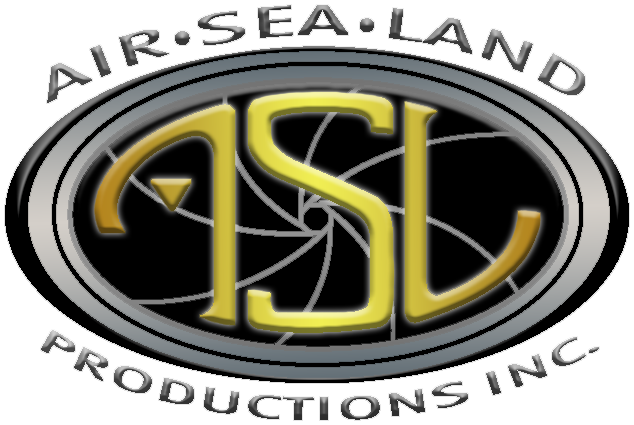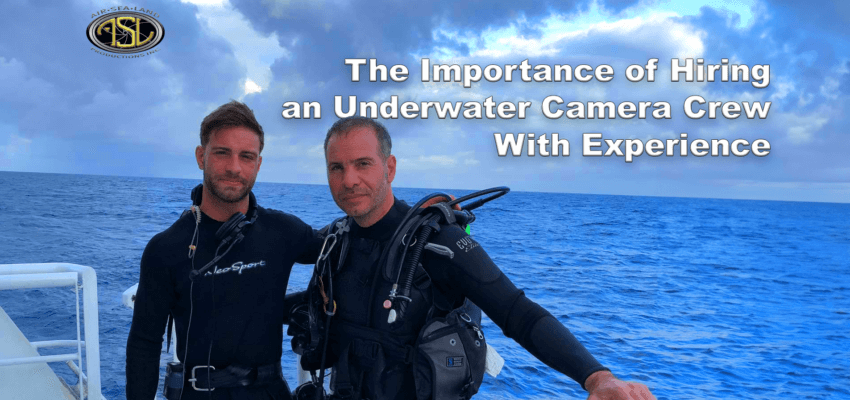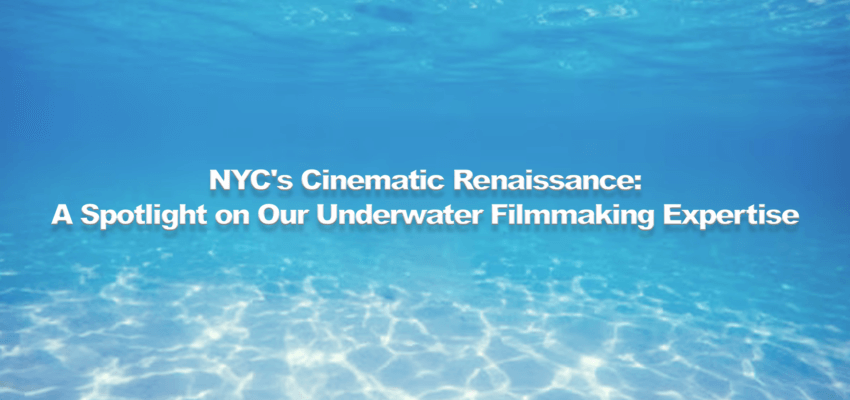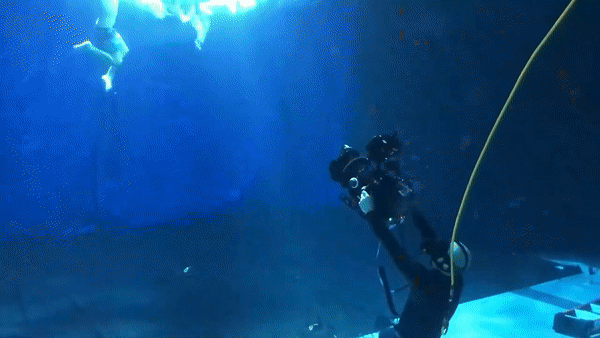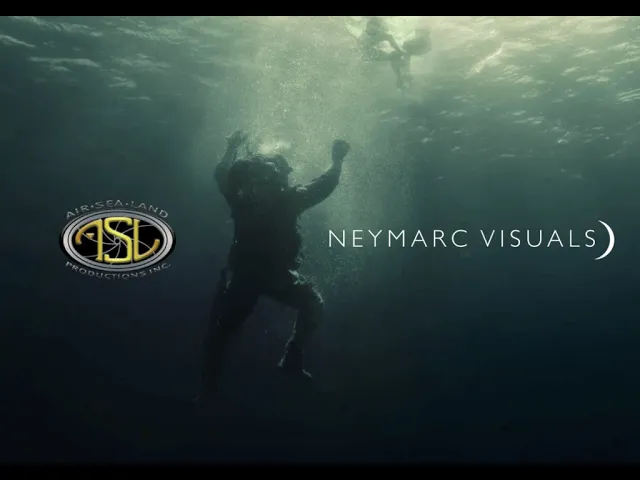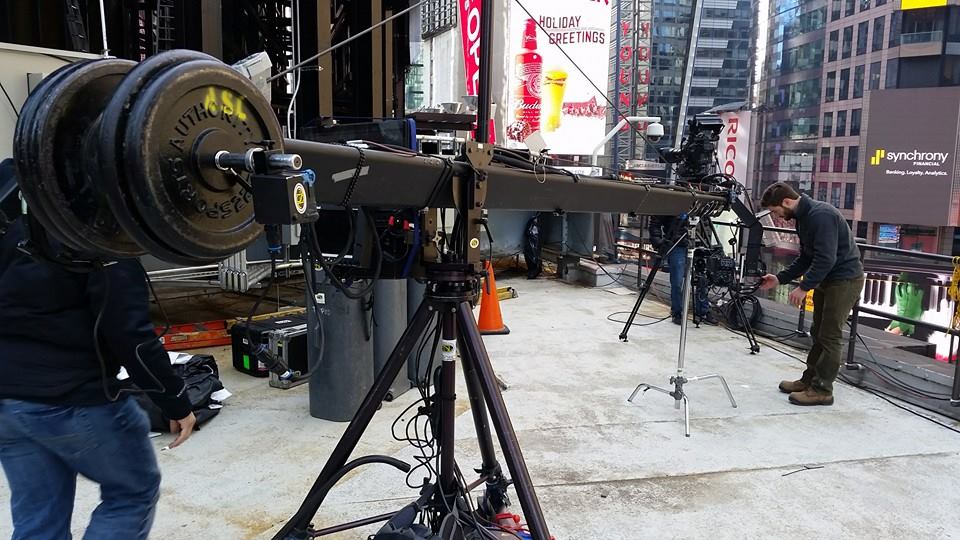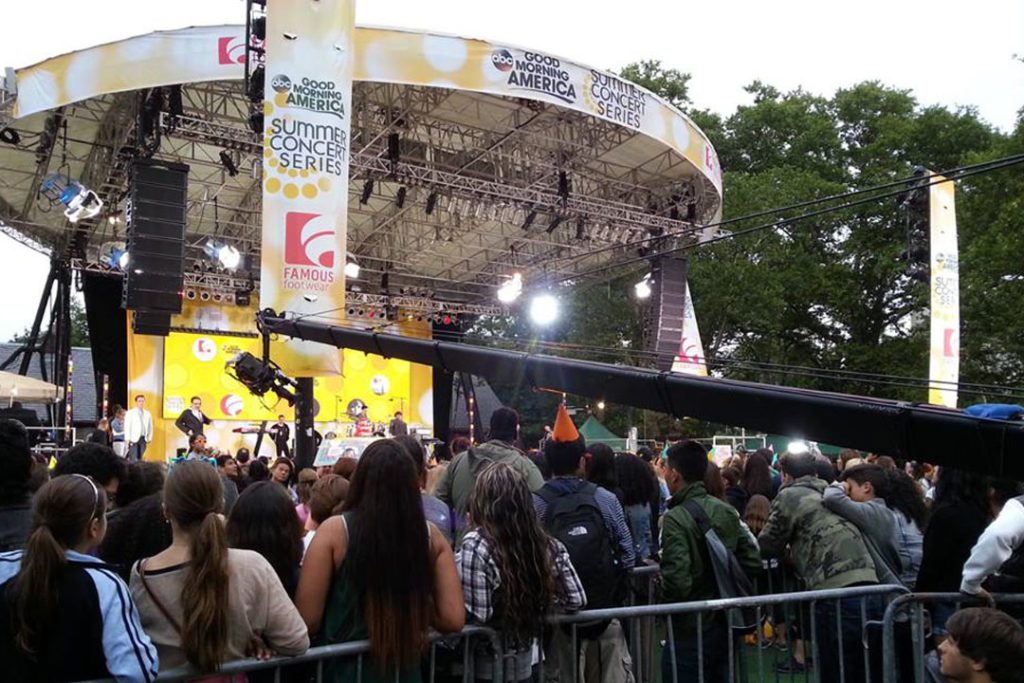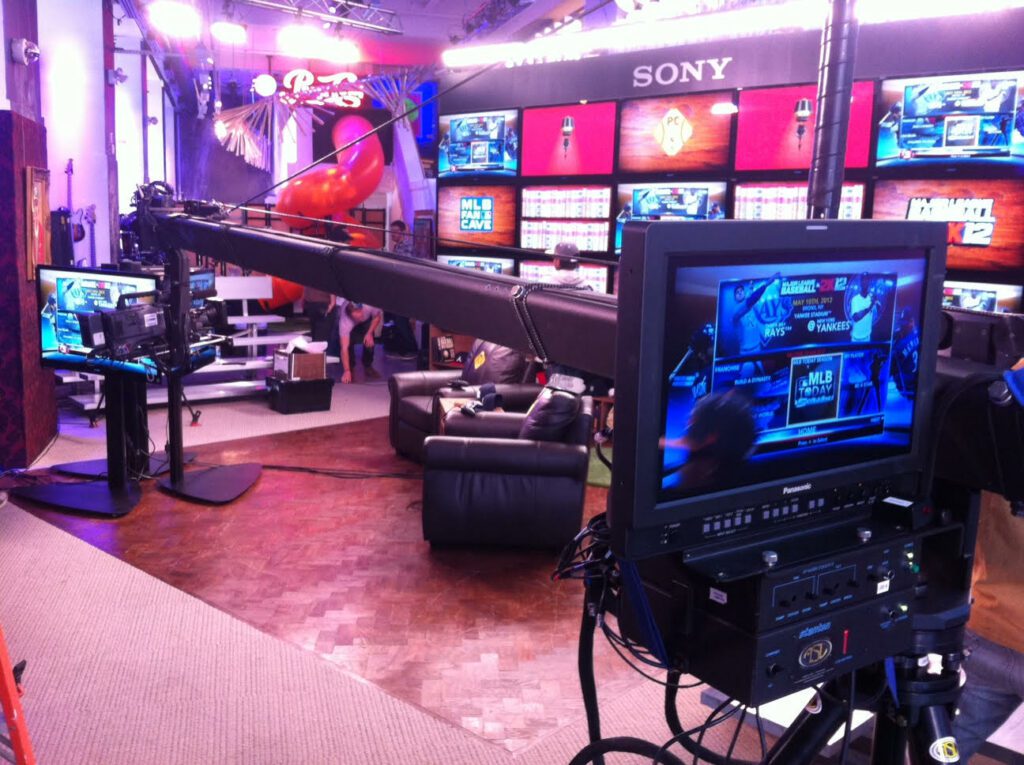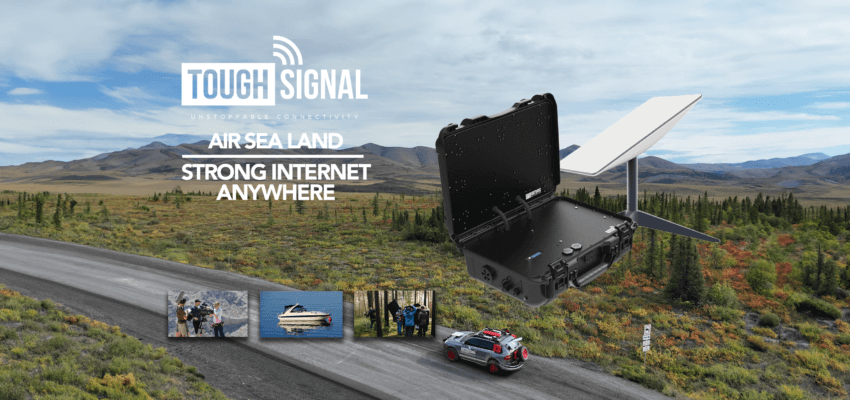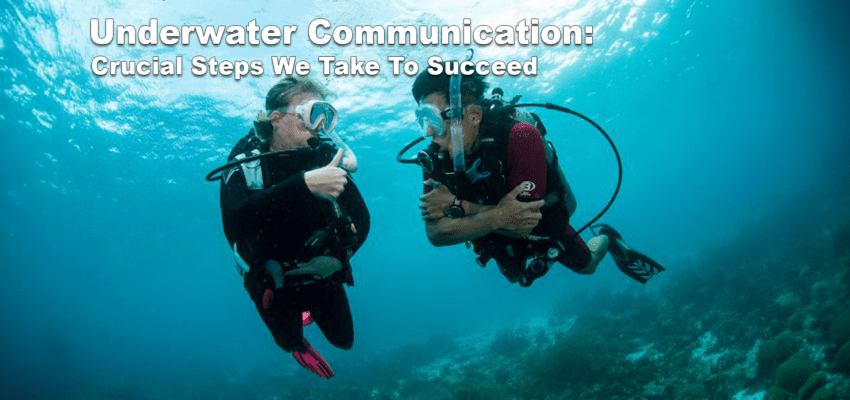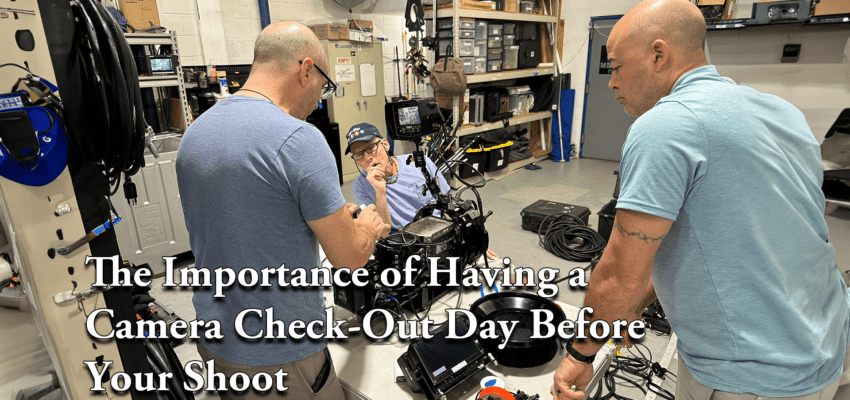In the fast-paced world of cinematography, where every shot tells a story, there’s a company that stands out not just for its technical expertise but for its deep-rooted friendship and unwavering commitment to excellence. This is the story of Air Sea Land (ASL), a company that has carved its niche as the largest underwater rental house in the Northeast and whose journey is as captivating as the films it helps create.
ASL’s journey began with a spark of inspiration and a leap of faith. Anthony S. Lenzo, the founder of ASL, started his career right out of high school. At 17 years of age, he began working for All Mobile Productions — following Mike Tyson with a camera, working for Italian and German television, filming tennis pros, and capturing concerts. His early experiences working for All Mobile Productions, what Anthony calls his college degree, laid the foundation for the camera operator he is today. He learned everything there is to know, from single-camera to multi-camera production.
Anthony moved from NYC to Florida, where he honed his skills and nurtured his passion for diving and underwater cinematography. Inspired by the photography term “depth of field,ˮ Anthony and his business partner opened Depth or Field Productions.
When Anthony moved back to New York in 1994, he was faced with the challenge of naming his new company after the dissolution of his previous partnership. He looked around at his existing equipment — all marked with his initials, ASL – and found inspiration. Recognizing the common practice aboard dive boats to mark gear with initials for clear identification of ownership, the idea for Air Sea Land was born. Air for jib cranes. Sea for underwater cameras. Land for everything in between.
Between New Yorkʼs up-and-coming hip-hop scene and the creation of the Food Network, ASL was in high demand. As Anthony ventured into the field and rental demands surged back at the shop, he found himself unable to manage all aspects of the business. While he initially recruited someone to oversee equipment rentals and editing, their departure for Massachusetts in 2007 left a critical gap in operations.
Anthony needed someone with expertise in tools and a high level of trustworthiness.
Enter: Gary Costantino.
Childhood friends who spent their days tinkering in garages and scouring the neighborhood to build bikes from spare parts, Anthony and Gary embarked on a new professional adventure together.


Central to ASL’s story is the enduring friendship between Anthony and Gary, rooted in a shared history of exploration, innovation, and intuition. Their fathers worked together and often brought the boys items to take apart and put back together again. At 12 years of age, Gary disassembled his uncleʼs Chevy Nova and rebuilt it from scratch.
As boys, Anthony and Gary shared a harmonious bond, never engaging in conflict and often understanding each other without words. Despite Gary’s initial lack of film industry experience, Anthony had full confidence in him. Recognizing Gary’s meticulous nature with equipment and drawing from his financial background on Wall Street, Anthony knew Gary would bring unique value to the team.
Gary, a natural at understanding the intricacies of mechanics, was the perfect fit for ASL. An out-of-the-box thinker, he possesses an extraordinary ability to troubleshoot and repair a wide array of equipment, making him an invaluable asset to the company. When Anthony and Gary work together in the shop, it reminds them of the good old days.
Another invaluable quality of this friendship is mutual support and reliability. An increasingly busy schedule and the constant influx of new equipment makes it challenging to keep tabs on all aspects of the business. Gary has taken the initiative to familiarize himself with every aspect of ASLʼs gear. His ability to identify and assemble the necessary components ensures that ASLʼs equipment is always ready for action.
With Gary supporting him from the shop and his nephew Bobby backing him up as a camera technician, Anthony can dive into the water with confidence.


When Anthony incorporated ASL in 1994, he didnʼt foresee that his company would become the largest underwater rental house in the Northeast. Originally envisioning jib cranes as the core focus of the business, Anthonyʼs eldest brother invested in ASLʼs first jib. Anthonyʼs youngest brother became ASLʼs first freelancer, later becoming a full-time employee.
Everything shifted upon developing their innovative Splash bags.
These protective covers offer a solution for safeguarding cameras from water exposure and splashes on set, reflecting ASL’s commitment to meeting industry needs with creative solutions. For further insights into the advantages of Splash bags and Underwater Housings, dive into our comprehensive article here.
When ASL identified this gap in the market, Garyʼs skills proved instrumental in the development stage. In the initial designs, an error was identified that required rectification. Instead of re-machining the proper parts, Gary took it upon himself to repair each faulty bag, one by one. Every bag was restored to full functionality, and they continue to perform flawlessly to this day.
ASL remained at the forefront of the underwater cinematography industry, leading in underwater POV work and innovative underwater systems. Anthony also played a pivotal role in consulting on the design of the first high-definition underwater housing — the NPV CAM F900 housing — with Amphibico. Though it has been surpassed in terms of image quality, operationally, nothing has matched its versatility and flexibility. With this housing, almost anything could be accomplished underwater, except changing your tape and battery.
ASL expanded its extensive inventory by becoming representative of HydroFlex, broadening its range of housings and lighting systems for East Coast clients. Like the versatile Splash bags accommodating various cameras, HydroFlex housings increased their inventory of deep underwater housings, catering to the demands of multiple camera models.


As ASL celebrates its 30th anniversary, it does so with a sense of pride and gratitude. Keeping the doors open for its employees through financial crises and worldwide pandemics, ASL is a company that defies the odds.
From humble beginnings in a basement apartment to becoming the go-to rental house for filmmakers across the Northeast, ASL’s journey is a testament to the power of friendship, passion, and perseverance. As ASL looks to the future, the torch will be passed to Anthonyʼs nephew, Bobby, and the spirit of adventure and collaboration that defines the company will remain as strong as ever.
If you have any questions or concerns, please don’t hesitate to reach out for professional services or further assistance. We are here to help your vision come to life:
Website: airsealand.com
Telephone: +1 (718) 626-2646
Email: info@airsealand.com or rentals@airsealand.com

